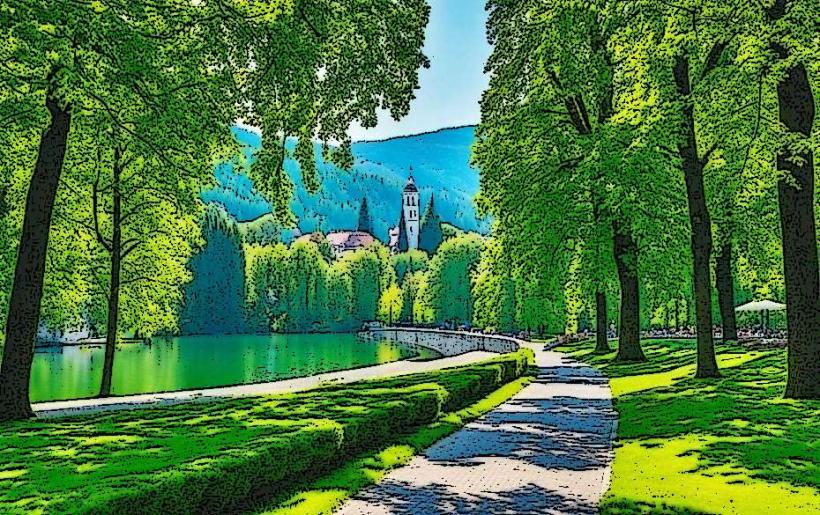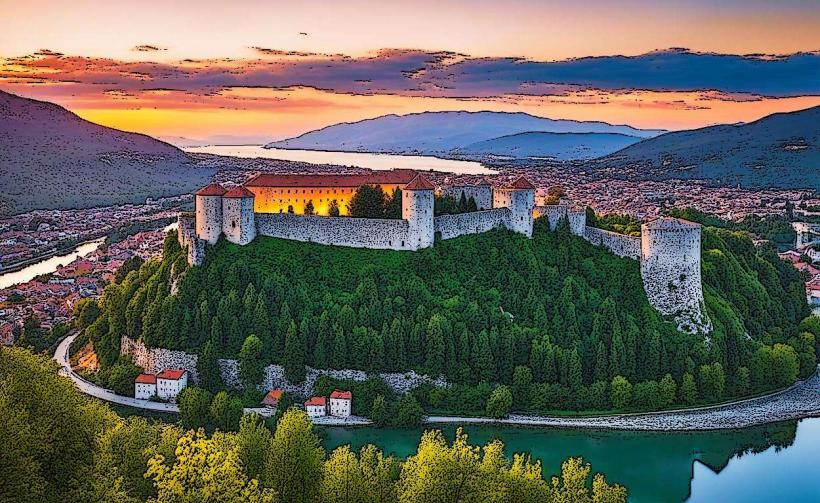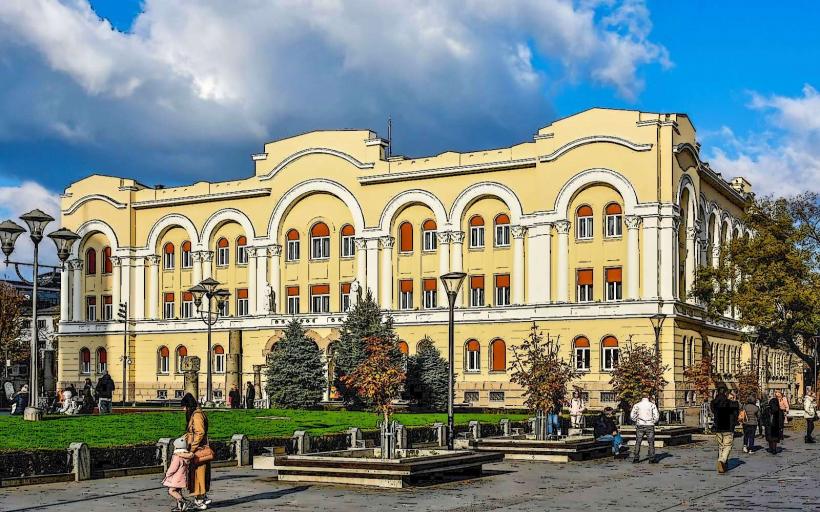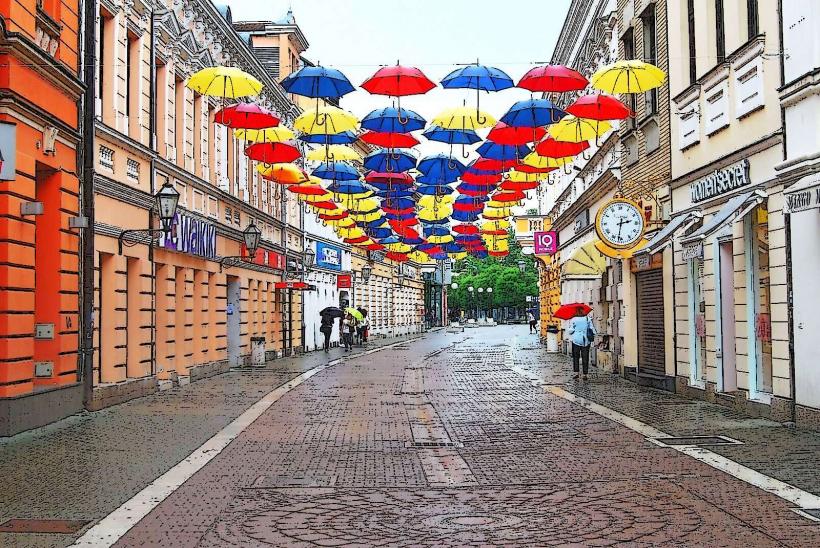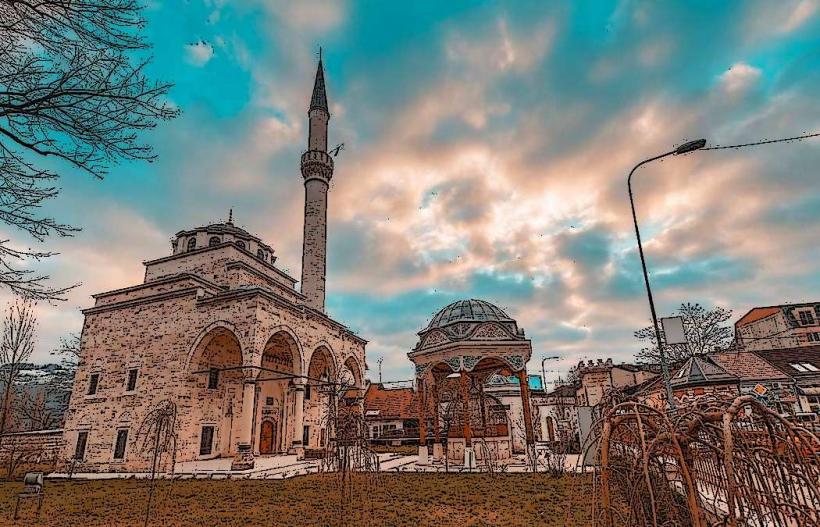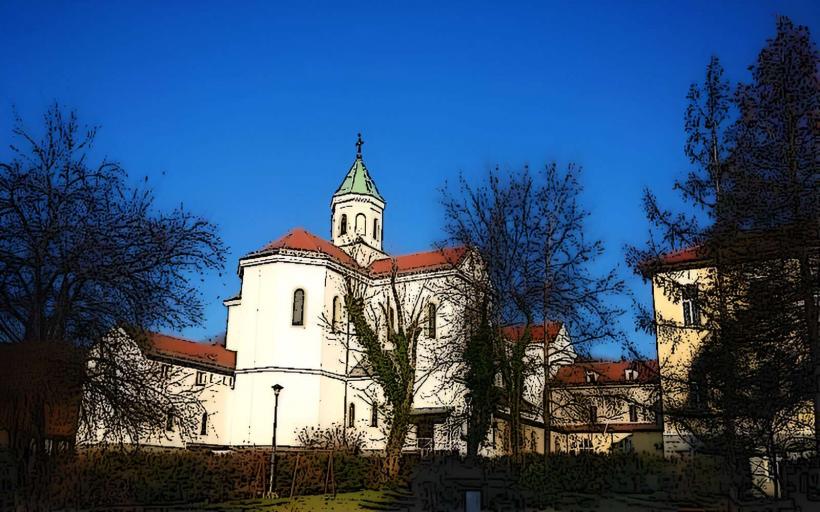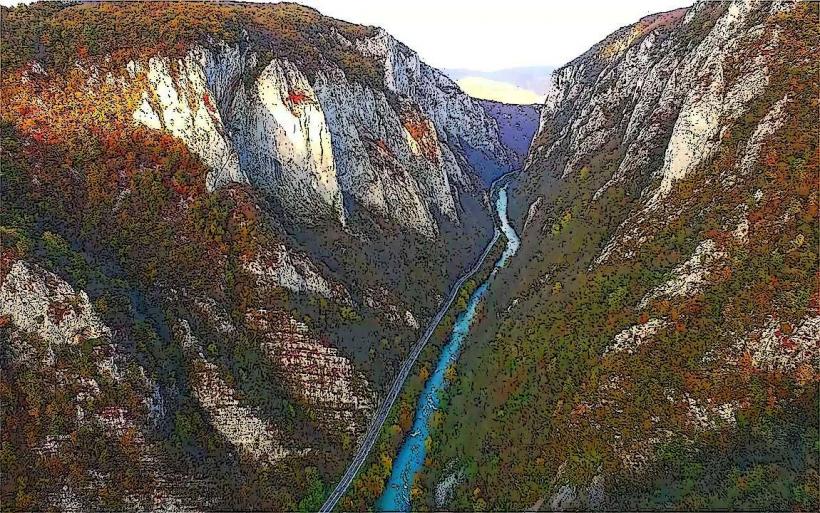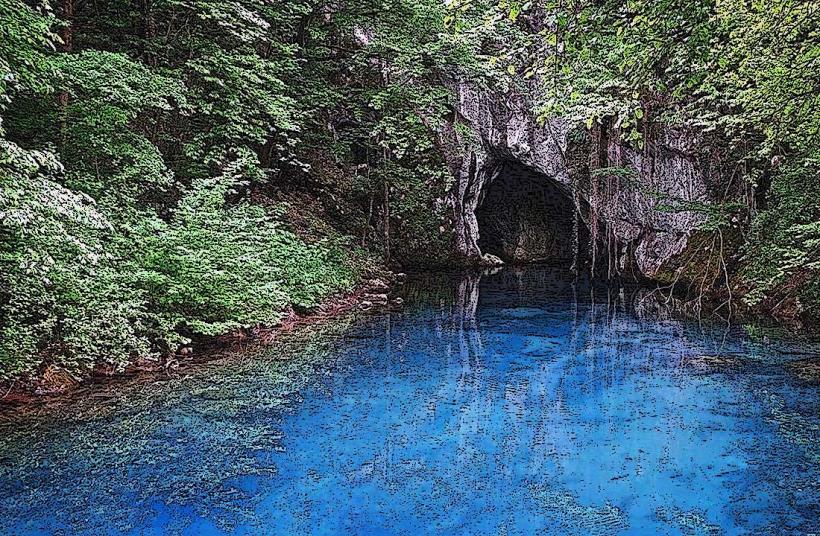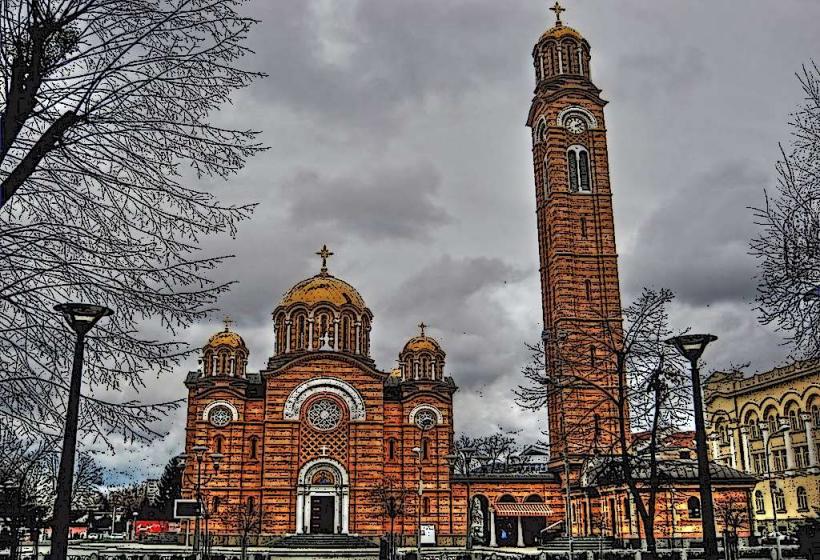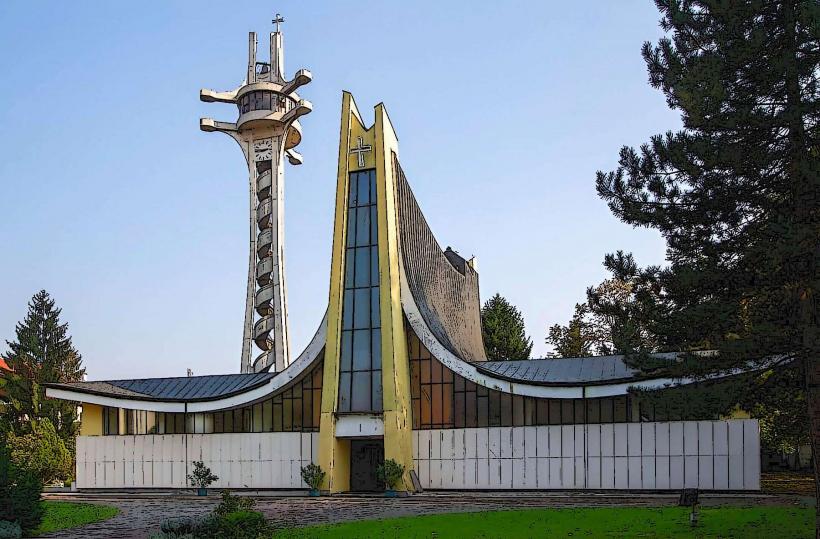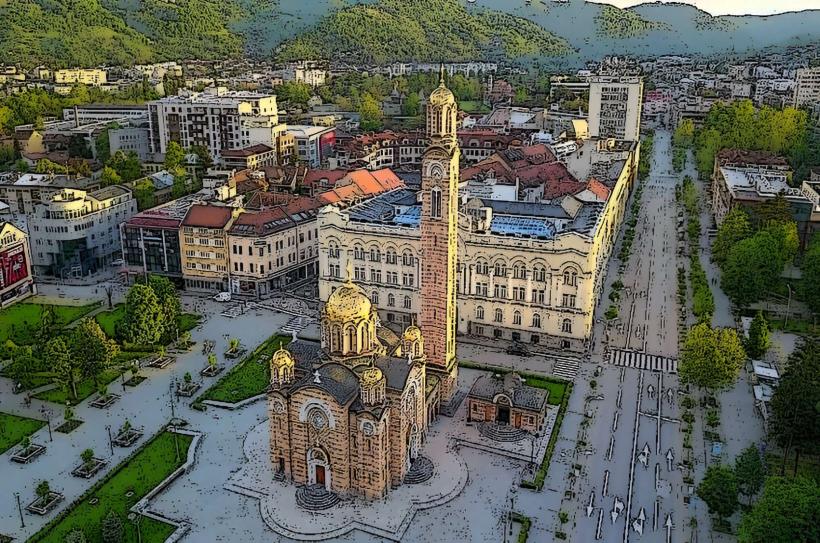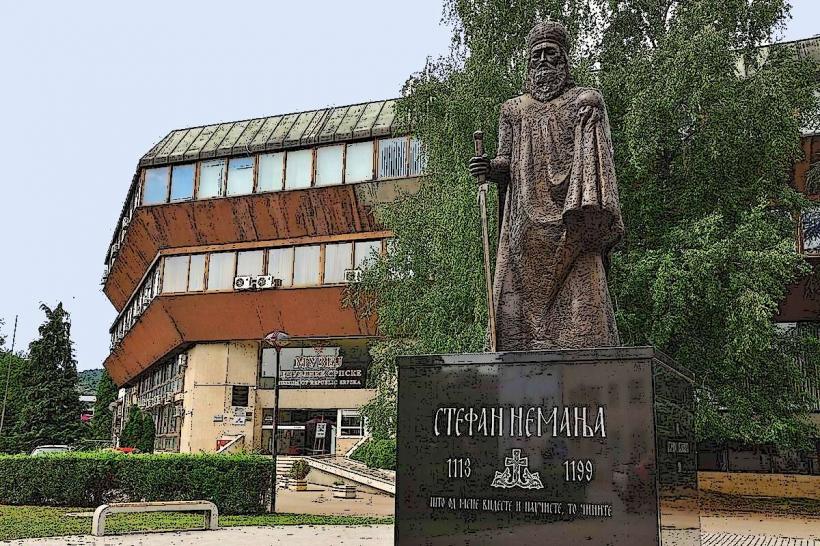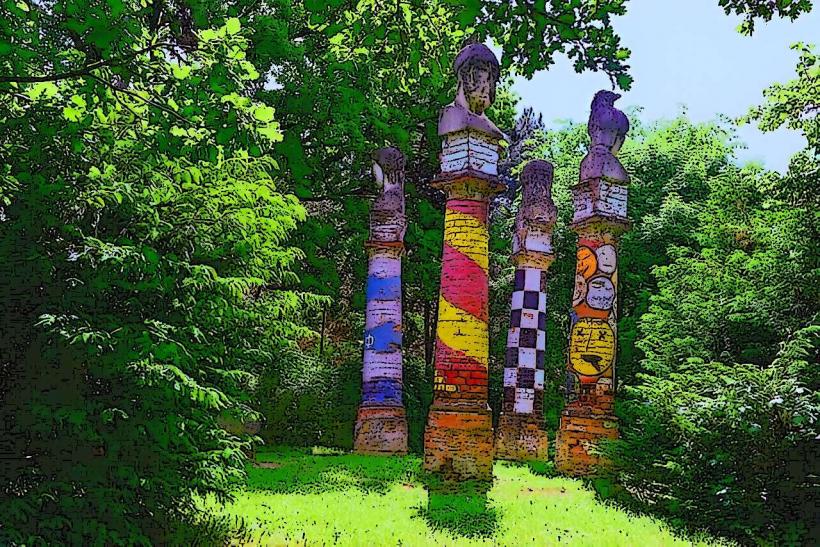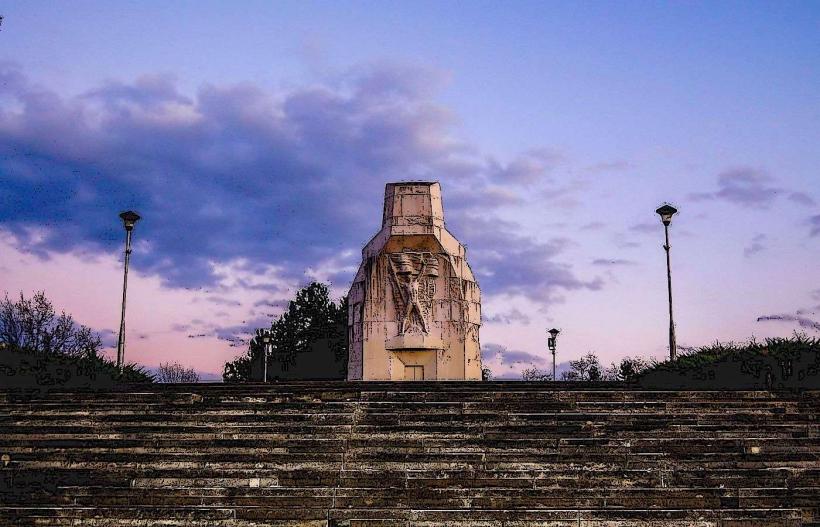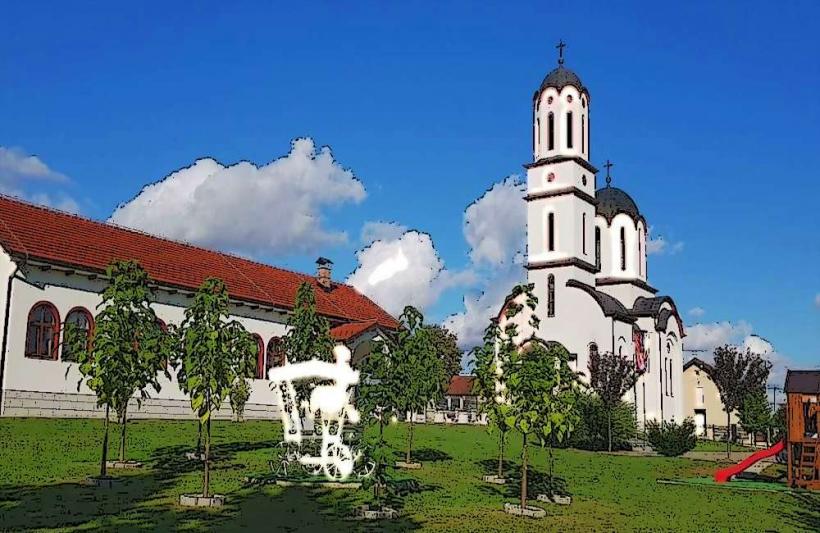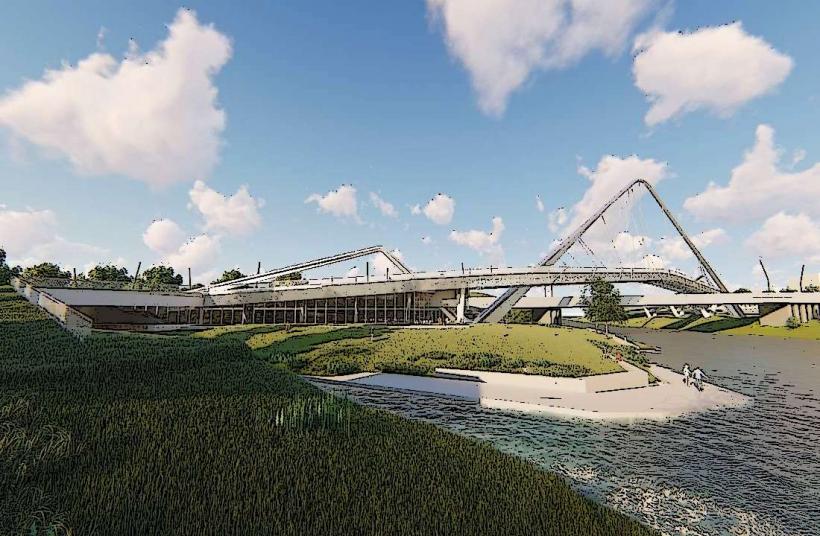Information
City: Banja LukaCountry: Bosnia and Herzegovina
Continent: Europe
Banja Luka is the second-largest city in Bosnia and Herzegovina and the largest city in the Republika Srpska entity. Located on the banks of the Vrbas River in the northwestern part of the country, Banja Luka is an important cultural, political, and economic center. The city is known for its scenic beauty, green spaces, rich history, and diverse cultural heritage, which reflects the various influences of different civilizations over the centuries.
Geography and Climate
Banja Luka is situated in a valley surrounded by mountains and forests, offering stunning natural views. The Vrbas River runs through the city, adding to its picturesque scenery. The river and surrounding landscapes make Banja Luka a popular destination for outdoor activities, particularly rafting, kayaking, and hiking.
The city enjoys a continental climate, with hot summers and cold winters. Summers in Banja Luka are typically warm, with temperatures often exceeding 30°C (86°F), while winters can be quite cold, with temperatures dropping below freezing and occasional snowfall. The city is known for having a fair amount of sunshine during the summer months, but fog is also common, especially during the fall and winter seasons.
History
Banja Luka’s history dates back to Roman times, but the city as we know it today has evolved over several centuries, influenced by different empires, kingdoms, and rulers.
Roman and Medieval Periods: The area of Banja Luka was originally part of the Roman Empire, and traces of Roman settlements and forts have been found in and around the city. During the Middle Ages, Banja Luka was part of various kingdoms and empires, including the Kingdom of Bosnia and the Ottoman Empire.
Ottoman Period (1463–1878): Banja Luka came under the control of the Ottoman Empire in the late 15th century, and this period had a lasting influence on the city’s architecture, culture, and society. The Ottomans built many of the city’s most famous landmarks, including mosques, bridges, and public baths. During this time, Banja Luka flourished as an important center for trade, agriculture, and administration. It was also a hub for the Ottoman military and a strategically important city in the region.
Austro-Hungarian Period (1878–1918): In 1878, following the Congress of Berlin, Banja Luka became part of the Austro-Hungarian Empire. This period brought significant modernization to the city, with the construction of railways, new roads, and public buildings. The Austro-Hungarians also introduced European-style architecture, and the city began to grow rapidly, especially in the early 20th century.
Yugoslav Period (1918–1992): After World War I, Banja Luka became part of the Kingdom of Yugoslavia and later the Socialist Federal Republic of Yugoslavia. During the 20th century, Banja Luka experienced significant industrial growth, with the establishment of factories, power plants, and other industries. The city was also home to a large Serb population, and the ethnic and religious diversity of the city continued to grow.
Bosnian War (1992–1995): During the Bosnian War, Banja Luka was a major city in the Republika Srpska entity, which was established by the Bosnian Serbs. The war had a significant impact on the city, and there was considerable damage to both infrastructure and buildings. The war also resulted in ethnic cleansing and the displacement of many Bosniak and Croat residents. Following the end of the war, Banja Luka underwent a process of rebuilding, although ethnic tensions and divisions have remained a challenge for the city.
Culture and People
Banja Luka has a rich cultural heritage that reflects the various influences the city has experienced over its long history. The population of Banja Luka is primarily Serb, with Orthodox Christianity being the dominant religion, but there are also smaller communities of Muslims, Catholics, and Jews.
Religion and Architecture: The Serbian Orthodox Church has a strong presence in Banja Luka, and the Christ the Savior Cathedral is one of the most significant religious buildings in the city. This cathedral, along with other Orthodox churches, has played an important role in shaping the city’s spiritual and cultural landscape. Banja Luka also has several mosques and Catholic churches, reflecting its religious diversity. The Ferhadija Mosque, which was destroyed during the war and rebuilt afterward, is one of the most prominent examples of Islamic architecture in Banja Luka.
Cuisine: The cuisine of Banja Luka reflects the broader Balkan culinary traditions, with influences from both Ottoman and Austro-Hungarian cultures. Traditional dishes include ćevapi (grilled minced meat), burek (pastry filled with meat or cheese), and sarma (stuffed cabbage rolls). The city is also known for its production of high-quality wine and rakija (a traditional fruit brandy). Pita (a savory pie) and baba (a type of cake) are also popular local dishes.
Arts and Festivals: Banja Luka has a thriving cultural scene, with several important theaters, galleries, and museums. The Banja Luka City Theater is one of the city’s key cultural institutions, offering a range of performances in theater, music, and dance. The Banja Luka Philharmonic Orchestra also plays a significant role in the city’s cultural life, offering concerts throughout the year.
The city hosts a number of cultural events and festivals, such as the Banja Luka Jazz Festival, which draws international musicians, and the Banja Luka Film Festival, which focuses on promoting independent cinema. Banja Luka Days, a multi-day celebration in the summer, showcases the city's cultural heritage, local music, food, and traditional dances.
Languages: The official language of Banja Luka is Serbian, which is spoken by the vast majority of the population. Bosnian and Croatian are also spoken by smaller communities in the city, reflecting the historical diversity of the region. Serbian is written using the Cyrillic alphabet, but Latin script is also commonly used, especially in urban and academic contexts.
Economy and Development
Banja Luka is the economic center of the Republika Srpska and plays a significant role in the broader Bosnian economy. The city has a diverse economy, with key sectors including industry, services, trade, and agriculture.
Industry and Trade: Banja Luka is home to several large industries, including textiles, construction, food processing, and furniture manufacturing. The city has a number of factories and industrial zones, and it is a major commercial hub in Bosnia and Herzegovina. The local economy is also supported by trade with neighboring countries and the rest of the world.
Tourism: Although not as well-known as Sarajevo or Mostar, Banja Luka has become an increasingly popular tourist destination, particularly for those interested in its natural beauty, cultural heritage, and historical sites. The city’s proximity to the Vrbas River offers opportunities for rafting and kayaking, and the surrounding mountains are ideal for hiking, skiing, and other outdoor activities. The nearby Kozara National Park is a popular spot for nature lovers, offering hiking trails, wildlife, and historical monuments.
Agriculture: Agriculture plays an important role in the economy of the Banja Luka region, with the fertile plains surrounding the city being ideal for the cultivation of fruits (especially apples and plums), vegetables, and grapes. The region is also known for its production of wine and brandies.
Education
Banja Luka is home to the University of Banja Luka, which is the largest educational institution in the Republika Srpska. The university offers a wide range of programs across multiple fields of study, including the humanities, sciences, engineering, and medicine. The city also has a number of other schools, including vocational schools and language institutes, as well as private educational institutions.
Transportation
Banja Luka is well-connected by road, rail, and air. The city has a central bus station and train station, which offer connections to other major cities in Bosnia and Herzegovina and beyond. Banja Luka International Airport is located just outside the city and offers regular flights to destinations in Europe. The city is also well-connected by highway, with easy access to neighboring Croatia and Serbia.
Conclusion
Banja Luka is a city that offers a unique blend of cultural heritage, natural beauty, and modern development. It has a rich history shaped by various empires and cultures, and its people are known for their resilience and warmth. Despite the challenges it has faced, particularly during the Bosnian War, Banja Luka continues to grow and prosper, offering a range of opportunities for tourism, business, and education. Whether you are drawn to its historical sites, its outdoor activities, or its cultural festivals, Banja Luka is a city that leaves a lasting impression.

